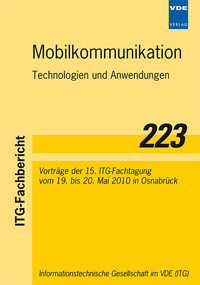NGMN Candidates Between Hype and Reality, Assessment Methodologies and Benchmark Parameters
Conference: Mobilkommunikation - Technologien und Anwendungen - 15. ITG-Fachtagung
05/19/2010 - 05/20/2010 at Osnabrück, Deutschland
Proceedings: Mobilkommunikation
Pages: 6Language: englishTyp: PDF
Personal VDE Members are entitled to a 10% discount on this title
Authors:
Petry, Hans-Peter; Knospe, Wolfgang; Mizorov, Vasil; Zhelev, Nikolay (Detecon International, Bonn, Germany)
Abstract:
Unleashing the attractive capabilities of the latest broadband mobile technologies is a key to success for telecom operators. There is now a second chance for operators with the so-called 4G technologies after the relatively moderate success of 3G in the past. Nevertheless, it actually seems that the “lessons learnt effects” have not been sufficiently taken into account in particular concerning the performance assessment of various 4G candidates. This paper describes the more critical NGMN issues and tries to evaluate simple but accurate, realistic and holistic parameters for its evaluation. Starting with an overview of the critical success factors and a comprehensive definition of the technology generations (2G, 3G, 4G) and their related network boundary conditions (e.g. backhaul), a first evaluation investigates realistic values for spectrum efficiency under real world conditions in particular considering adaptive and spatial processing capabilities and their influence on best case and worst case behavior. The theoretical statements are compared to real world results from the latest trials for WiMAX and LTE. An easy to remember model for spectrum efficiency values is presented as a result. For larger scale investigations and technology comparisons, a more holistic model is required addressing air interface and network aspects. Fortunately, even complex scenarios can be described by a single parameter: service production cost. An associated methodology and toolset is briefly described and explained with some typical examples.


